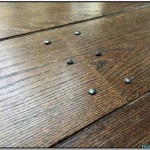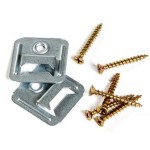Essential Aspects of Laminate Flooring Transition Installation
When installing laminate flooring, transitions are crucial for a seamless and professional-looking finish. They ensure a smooth transition between different flooring surfaces, such as laminate and tile or carpet. Installing laminate flooring transitions requires precision and attention to detail to achieve a flawless result. Here are the essential aspects you need to consider:
Type of Transitions
There are different types of transitions available, each designed for specific applications. T-moldings connect laminate flooring to the same level of flooring. Reducer moldings transition laminate flooring to a lower surface, such as carpet or tile. End caps are used to finish off the edges of laminate flooring where it meets a wall or other obstacle.
Measurement and Cutting
Accurate measurements are essential for a precise fit. Measure the length of the transition and cut it using a sharp utility knife or miter saw. Make sure the cuts are clean and straight. For T-moldings and reducer moldings, you need to cut a 45-degree angle on each end to create a mitered joint.
Underlayment Installation
Depending on the manufacturer's recommendations, you may need to install an underlayment beneath the transition. Underlayment helps to level the surface and reduce noise. Cut the underlayment to the same size and shape as the transition.
Adhesive Application
Apply construction adhesive or flooring glue along the underside of the transition. Use a notched trowel to spread the adhesive evenly. Press the transition firmly into place, ensuring it is flush with the flooring surfaces.
Fastener Installation
For added security, you can use fasteners to secure the transition. Nails or screws can be driven through pre-drilled pilot holes. Countersink the fasteners below the surface for a clean finish.
Finishing Touches
After the transition is installed, you can apply caulk or grout along the edges to fill any gaps and provide a smooth, finished look. Caulk that matches the color of your flooring or transition will blend seamlessly and enhance the overall appearance.
Maintenance
To maintain the beauty and functionality of your laminate flooring transitions, regular cleaning and maintenance are essential. Use a damp cloth or mop to clean the transitions and avoid using harsh chemicals or abrasive cleaners. If necessary, you can apply a protective sealant or wax to enhance durability and resistance to wear and tear.
Professional Installation
For complex or extensive transitions, it is recommended to seek professional installation services. Experienced installers can ensure proper measurements, precise cutting, and secure installation, resulting in a flawless and long-lasting transition.

How To Install Vinyl Flooring Transition Strip Lvp Moulding

Installing Laminate Transitions Step By Instructions

Flooring Transition Strips Moldings Trims Onflooring

Pro Tips And Tricks For Installing Laminate Flooring

Laminate Flooring Transition Piece

How To Install Transition Strips In Doorways

Help With Transition Between Rooms Using Hardwood And Laminate Flooring Home Improvement Stack Exchange

How To Install A T Molding Glue Down

How To Add Floor Trim Transitions And Reducers Young House Love

How To Transition Between Uneven Laminate Floors
Related Posts








